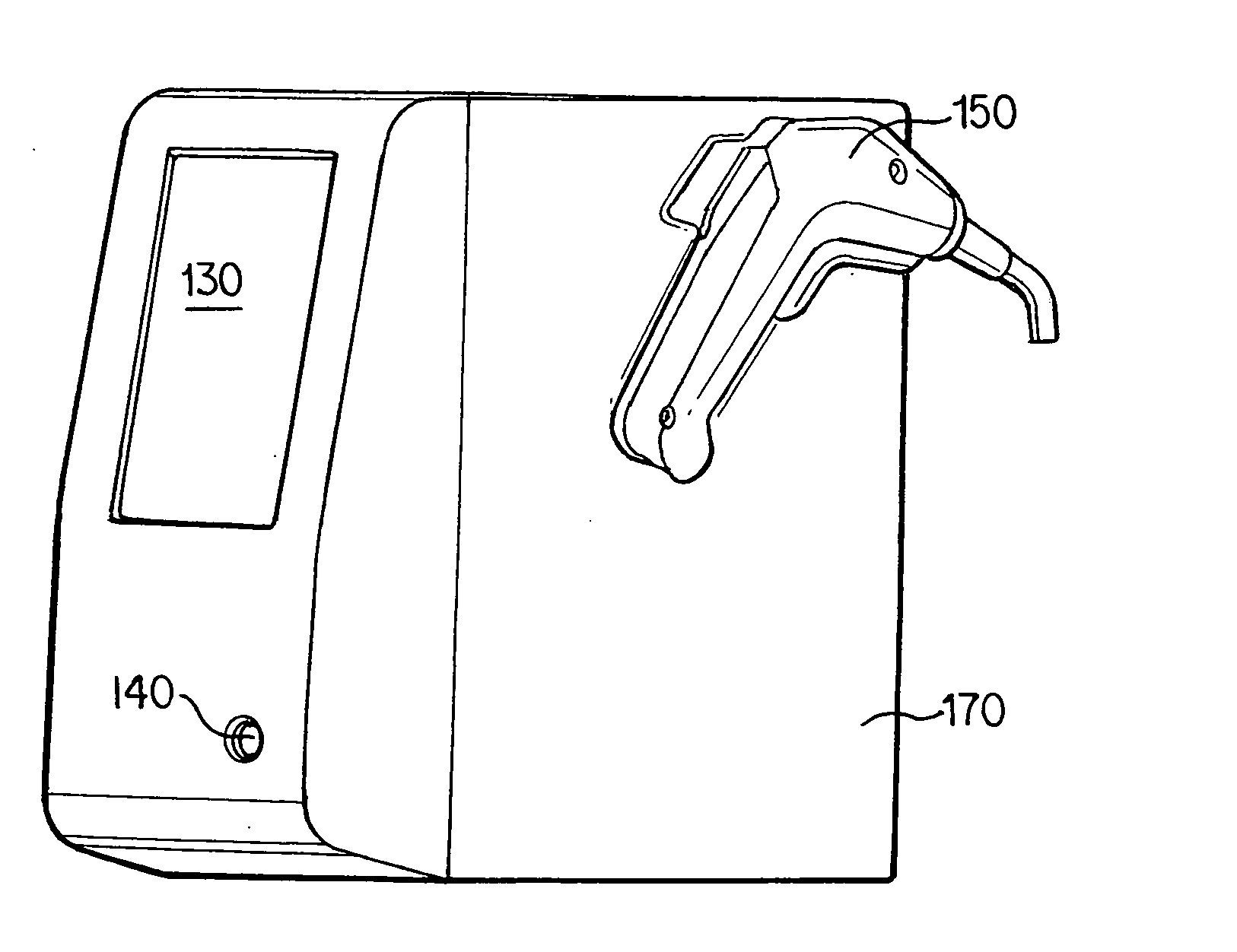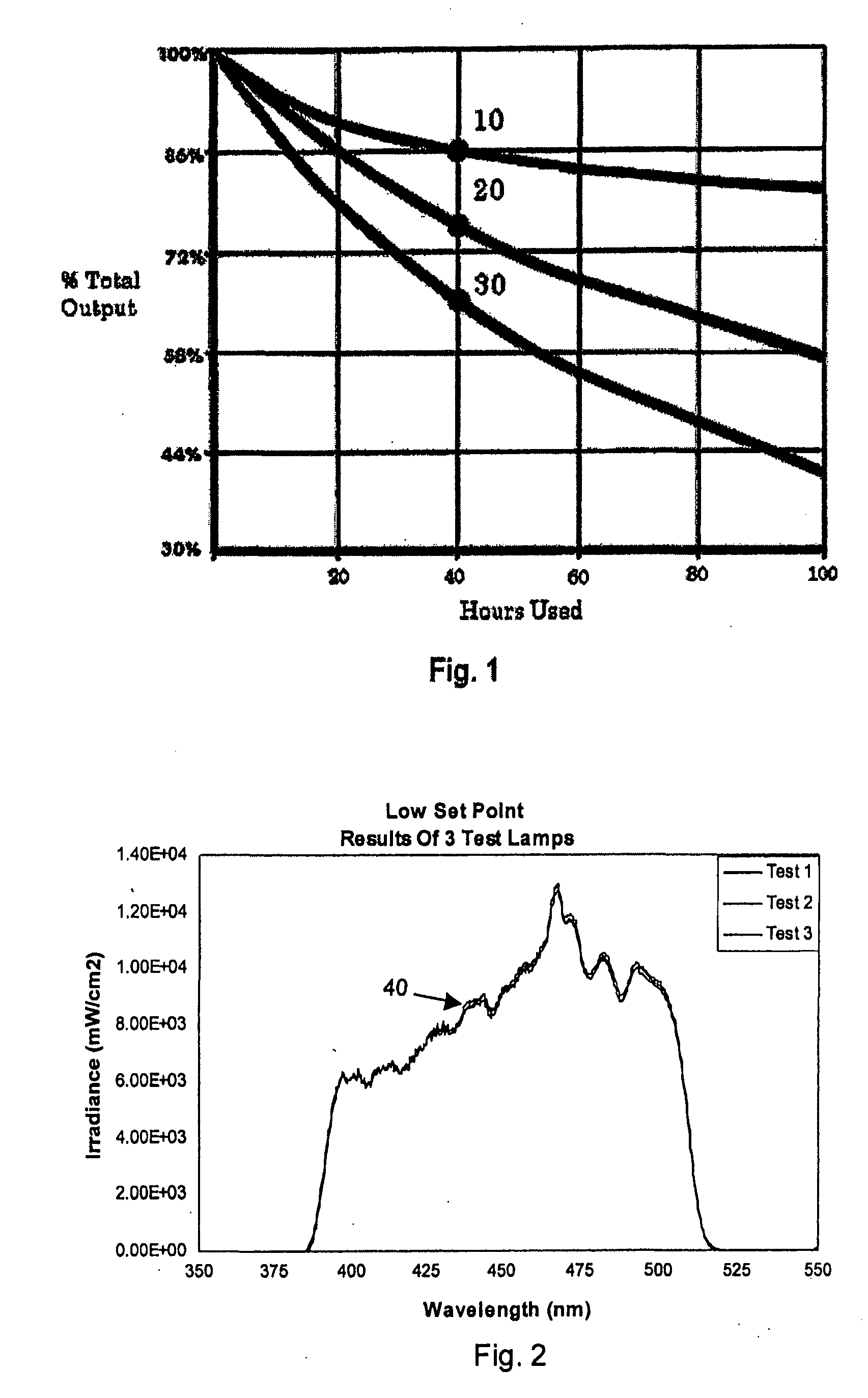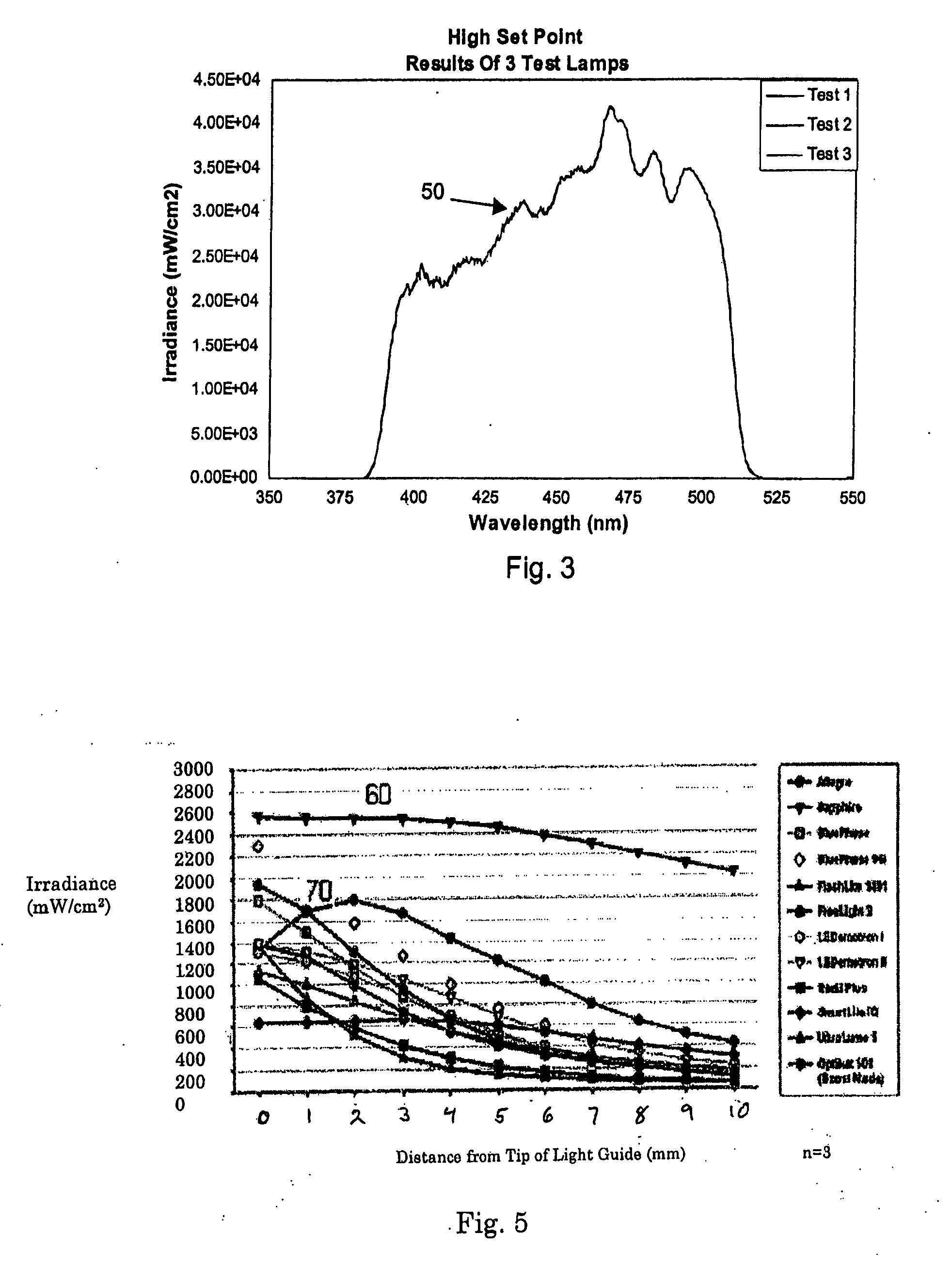Optically regulated dental light unit
a technology of optical light unit and curing system, which is applied in dental surgery, dental tools, medical science, etc., can solve the problems of reducing the light output, affecting the quality of dental restorations, so as to achieve stable and repeatable light output
- Summary
- Abstract
- Description
- Claims
- Application Information
AI Technical Summary
Benefits of technology
Problems solved by technology
Method used
Image
Examples
Embodiment Construction
[0050]For simplicity and illustrative purposes, the principles of operation of the present invention are now described. Although certain embodiments of the invention are particularly described, one of ordinary skill in the art will readily recognize that the same principles are equally applicable to, and can be implicated in, other devices and methods, and that any such variation would be within such modifications that do not part from the scope of the present invention. It is to be understood that the invention is not limited in its application to the details of any particular embodiment shown, since of course the invention is capable of other embodiments. The terminology used herein is for the purpose of description and not of limitation. Further, although certain methods are described with reference to certain acts, operations, or steps that are presented herein in certain order, in many instances, these acts, operations, or steps may be performed in any order as may be appreciat...
PUM
 Login to View More
Login to View More Abstract
Description
Claims
Application Information
 Login to View More
Login to View More - R&D
- Intellectual Property
- Life Sciences
- Materials
- Tech Scout
- Unparalleled Data Quality
- Higher Quality Content
- 60% Fewer Hallucinations
Browse by: Latest US Patents, China's latest patents, Technical Efficacy Thesaurus, Application Domain, Technology Topic, Popular Technical Reports.
© 2025 PatSnap. All rights reserved.Legal|Privacy policy|Modern Slavery Act Transparency Statement|Sitemap|About US| Contact US: help@patsnap.com



